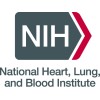Myocardial Contrast Echocardiography (MCE) to Check for Living and Working Heart Muscle
Coronary Disease, Heart Diseases

About this trial
This is an interventional treatment trial for Coronary Disease focused on measuring CABG, Hibernation, LV Function, Microbubbles, Revascularization, Coronary Artery Disease
Eligibility Criteria
Patients undergoing evaluation for CAD who show at least two myocardial segments with wall motion abnormalities on a baseline echocardiogram will be offered to participate in this study. Patients will be adults older than 21 years of age. No pre-menopausal patients who are lactating, are pregnant or potentially pregnant as judged by history, physical examination, ultrasound or urine pregnancy test. No one with unstable angina. No subjects with recent myocardial infarction (less than 1 month). No one with frequent ectopy which precludes adequate imaging acquisition. No subjects with significant hypertension (systolic blood pressure greater than 170 mm Hg). No hypotension with basal sitting systolic arterial pressure less than 100 mm HG confirmed 30 minutes later. No subjects with sinus tachycardia greater than or equal to 100 beats/minute. No atrial fibrillation. No inadequate two-dimensional echocardiographic windows.
Sites / Locations
- National Heart, Lung and Blood Institute (NHLBI)
Outcomes
Primary Outcome Measures
Secondary Outcome Measures
Full Information
1. Study Identification
2. Study Status
3. Sponsor/Collaborators
4. Oversight
5. Study Description
6. Conditions and Keywords
7. Study Design
8. Arms, Groups, and Interventions
10. Eligibility
12. IPD Sharing Statement
Learn more about this trial
